A Bavarian Jewel Box Retreat Designed by AD100 Studio Peregalli
Milan-based design firm Studio Peregalli are masters at conjuring spaces fit for dreaming. Otherwise known as Laura Sartori Rimini and Roberto Peregalli, the pair of AD100 designers are renowned for concocting rarefied retreats, blissfully free from the unrelenting demands of modern life. Their atmospheric, enchantingly anachronistic style is, by definition, escapist, which is why it made perfect sense when a longtime client called on them to create a getaway on the shores of the Tegernsee, a lake in the Bavarian Alps.
The homeowner had previously commissioned the team to design his primary residence in nearby Munich, as well as holiday homes in Corsica and St. Moritz, and to work on the larger residence on this same property. The patriarch of an extensive family, his brief for Studio Peregalli was to fashion an intimate bolt-hole for himself and some choice selections from his accumulated treasures—a sanctuary he could slip away to when the ruckus in the main house proved too much. “The property sits between the mountains and a little lake, and it was designed very picturesquely,” he says. “It’s my private refuge.”
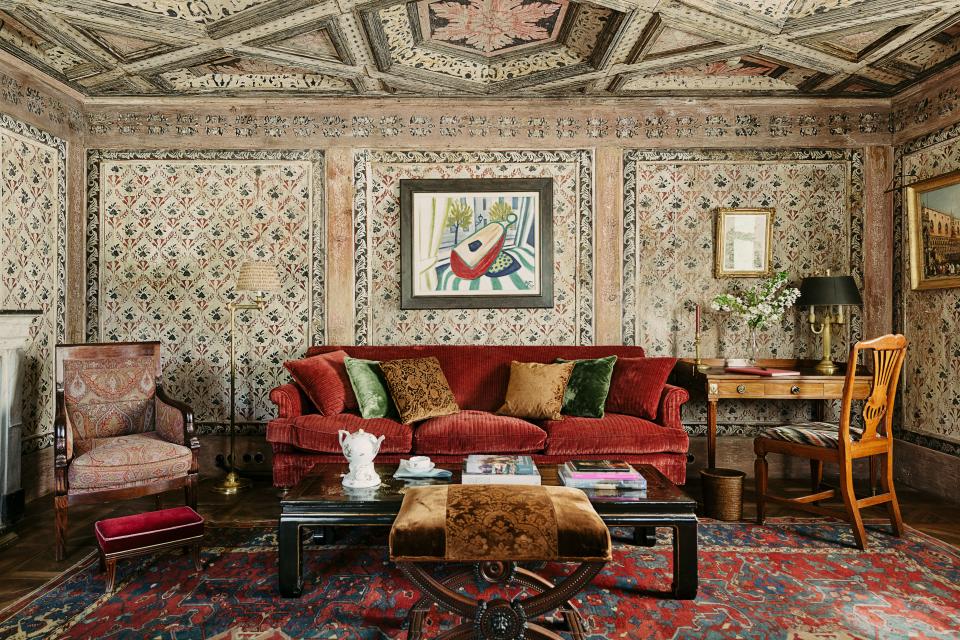
“The owner is a very refined person,” notes Sartori Rimini of their frequent collaborator. “He has a passion for 18th- and 19th-century Italian architecture,” Peregalli adds. “He collects drawings and paintings—from the 17th century up to the expressionist movement.” For this reason, the pair envisioned the home as a Wunderkammer, a self-contained jewel box tucked in among the trees. “He wanted a sort of dacha,” recalls Peregalli, referring to the traditional Russian holiday cottage, though in this case done up with Studio Peregalli’s richly layered nostalgic flair.
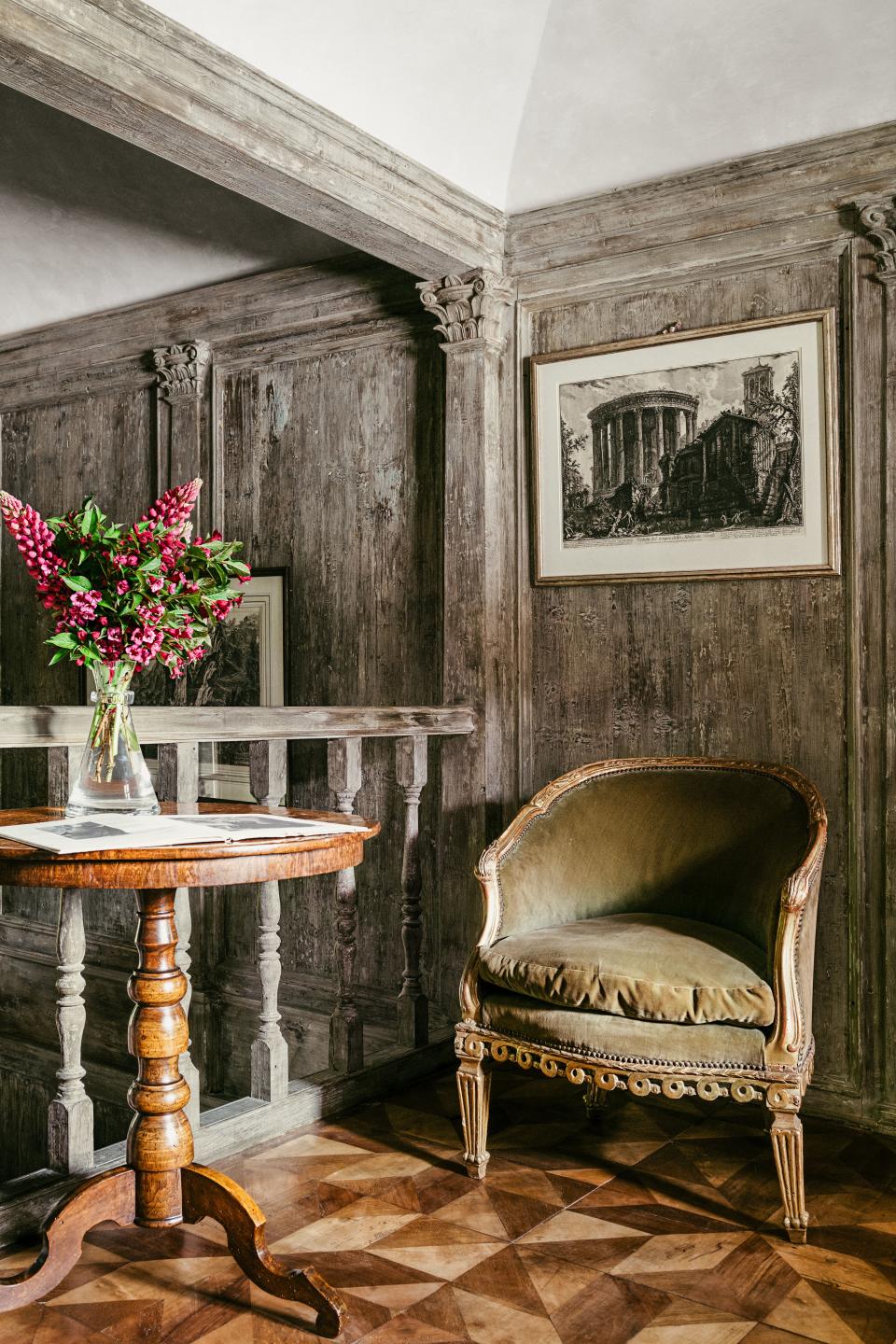
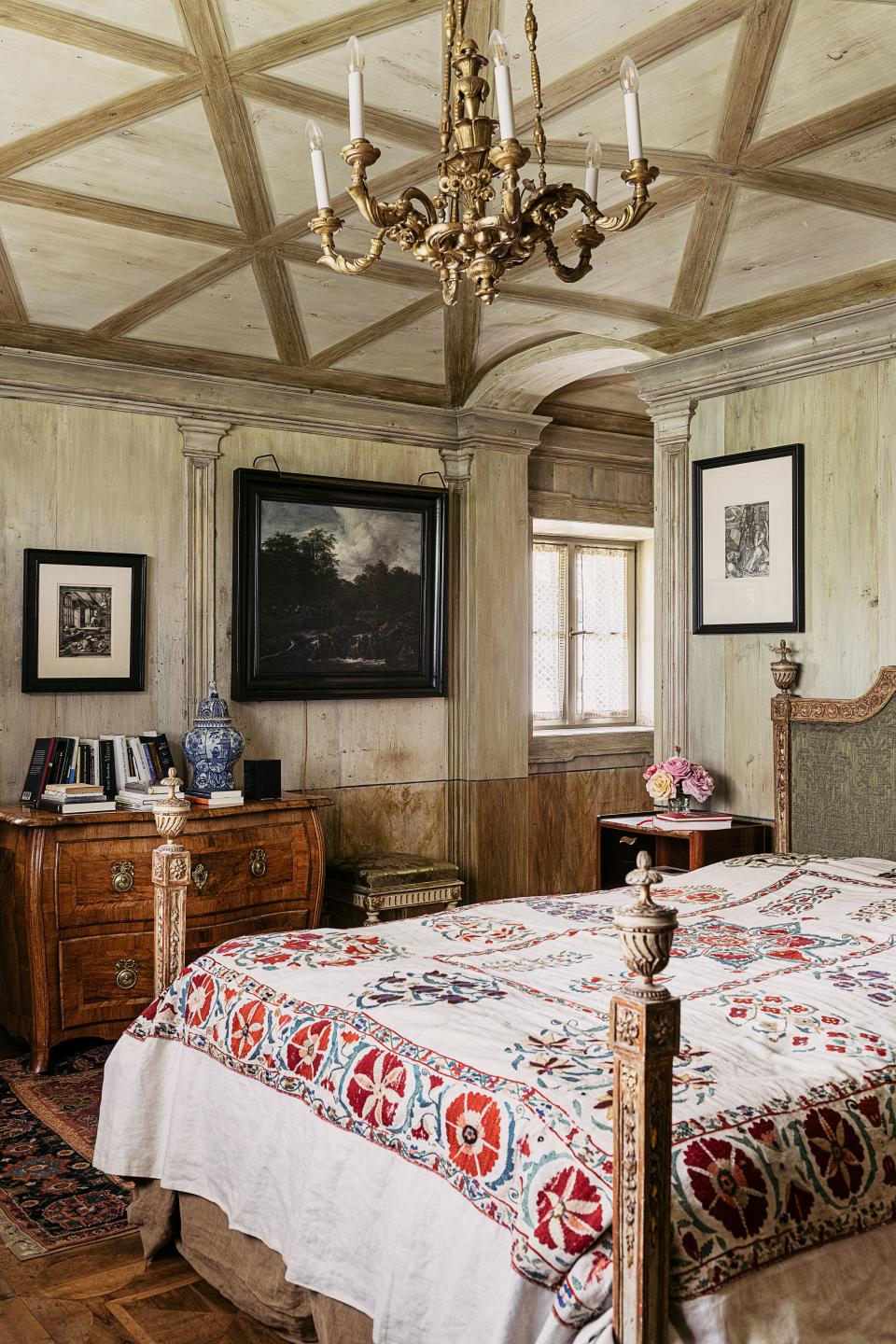
The project’s starting point was an existing guesthouse on the property’s fringes, but when they surveyed the location, an aged structure and a crumbling foundation was all that greeted them. So they tore it down and started fresh while replicating precisely the original building’s weathered-wood envelope and interior floor plan, and added a small poolhouse next door, connected by a glass-walled vestibule. From the outside, “it’s a house that’s simple as can be,” Peregalli muses of the little cottage, whose modest façade belies the opulent world within, “but when you step inside, it’s a surprise.”
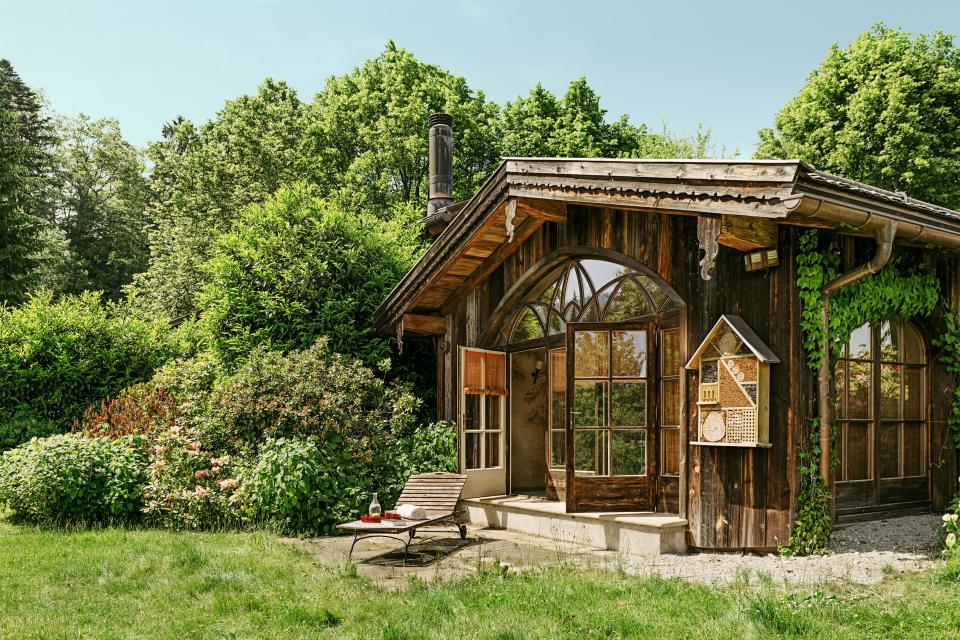
Crossing the threshold, visitors are greeted by walls clad in 17th-century hand-painted blue-and-white Portuguese tiles, which, explains Peregalli, create a brightening “damask effect” in the otherwise shadowy entry hall. From there, a grand aged-wood staircase, lined with stately pilasters that frame the owner’s impressive collection of 18th-century architectural prints, winds up to the bedroom and private studio above.
Ornately carved wooden paneling, plucked from a drafty Tyrolean manse that time forgot, was expertly grafted onto the ceilings of the ground-floor rooms. “Normally, wooden boiseries were used in the past to protect and insulate these kinds of houses,” explains Sartori Rimini of the detail’s provenance. Here they provided a touchstone for the home’s defining spirit: a cozy, site-appropriate Gemütlichkeit balanced with cosmopolitan flair.
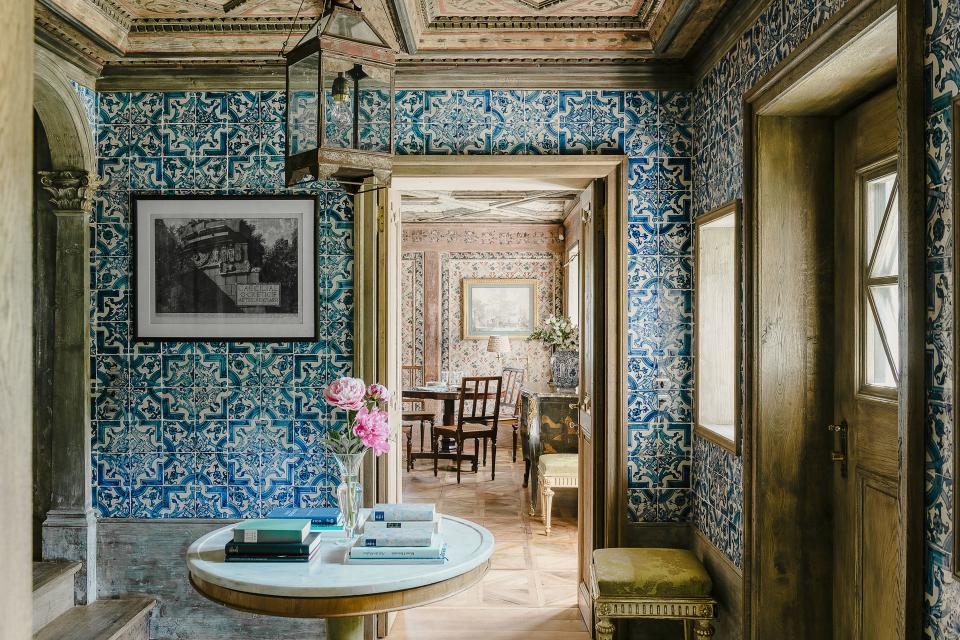
“Bavaria is in the south of Germany, very close to Austria,” notes Sartori Rimini, and Tegernsee was once a summer playground for the Bavarian royal family, “so there’s a long tradition of wooden houses and wooden chalets.” Indeed, salvaged antique timber features pop up throughout the home in every conceivable way, from 18th-century stenciled panels in the cozy sitting room to a patchwork of parquet flooring laid out differently in each room. “We always love the link between the project and where it is,” she continues. “We tried to stay true to the tradition of the local architecture but enriched by the personality of the owner.”
In the sitting room, the faded-pink and deep-red tones snaking up the paneling are echoed in the 17th-century Oushak rug, the overstuffed ruby-colored corduroy sofa, and a Regency-style mahogany chair upholstered in a paisley textile, all masterfully clustered below a Max Beckmann still life, part of the owner’s vast collection of expressionist paintings. Furniture is a “mixture,” Peregalli says of the potent visual cocktail of antiques, sourced from auctions and dealers in Italy and abroad, “much like the houses of the past.”
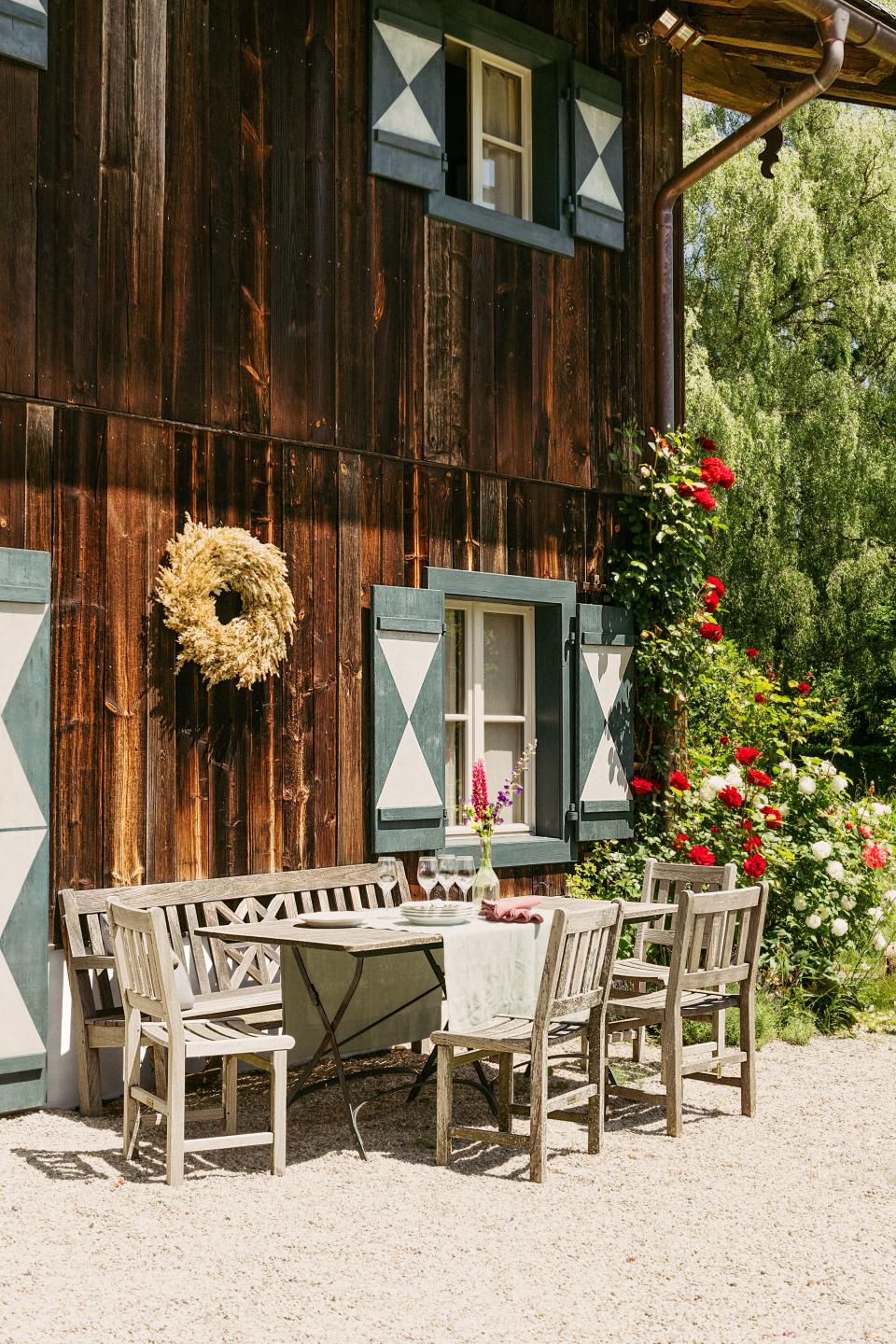
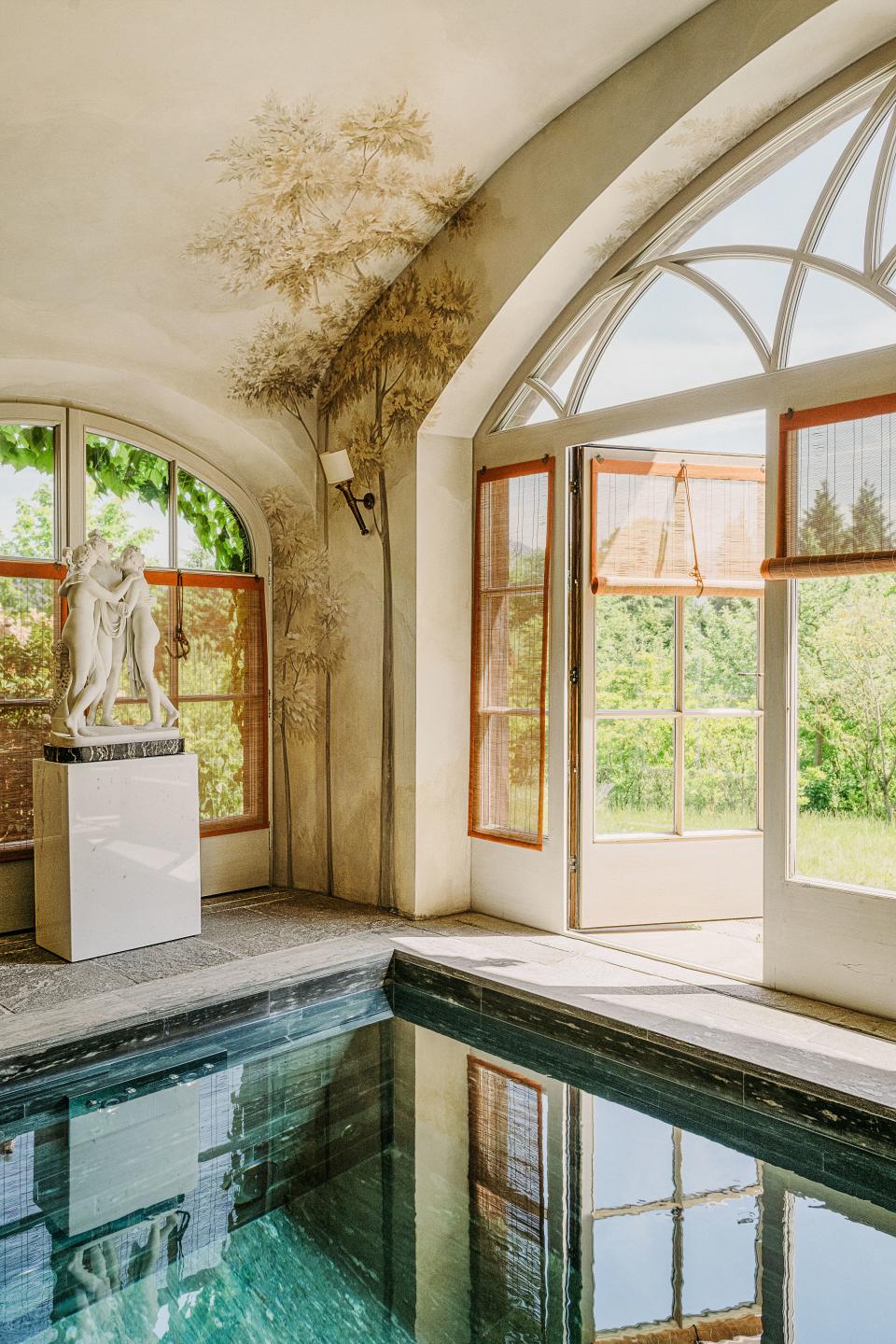
“It’s a balance,” Sartori Rimini chimes in, “between grandness and simplicity.” That dichotomy is easily discerned in the upper-level bedroom, which is more subdued than the sumptuous lower floor. The room’s vaulted ceiling was painted with a sober trompe l’oeil timber pattern, which politely defers to the majestic antique bed frame and 18th-century hand-embroidered linen suzani bedspread.
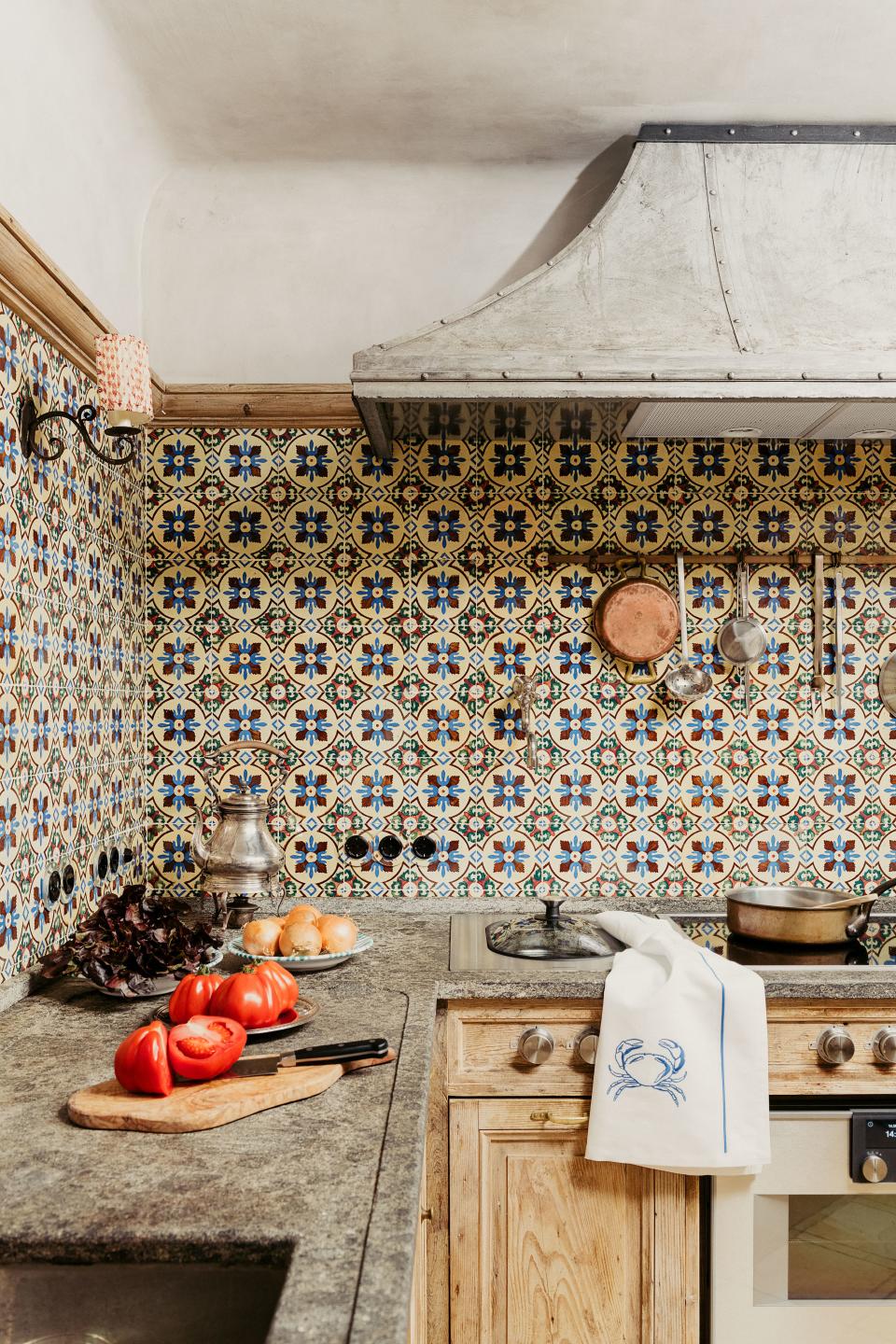
Studio Peregalli’s team of craftspeople and artisans descended on Tegernsee to add the final touches, such as the arboreal mural in the pool room, which was painted on-site entirely by hand. The ethereal illustration was based on a similar one at a villa in Tuscany. Such theatrical moments bring to mind the duo’s mentor, Milanese decorator Renzo Mongiardino, famous throughout Europe and America for his brilliantly ornamented stage set–like rooms. “He wanted a dreamy place,” Sartori Rimini recalls of the client’s vision. “So, in every room here, we created a small world.”
Originally Appeared on Architectural Digest

